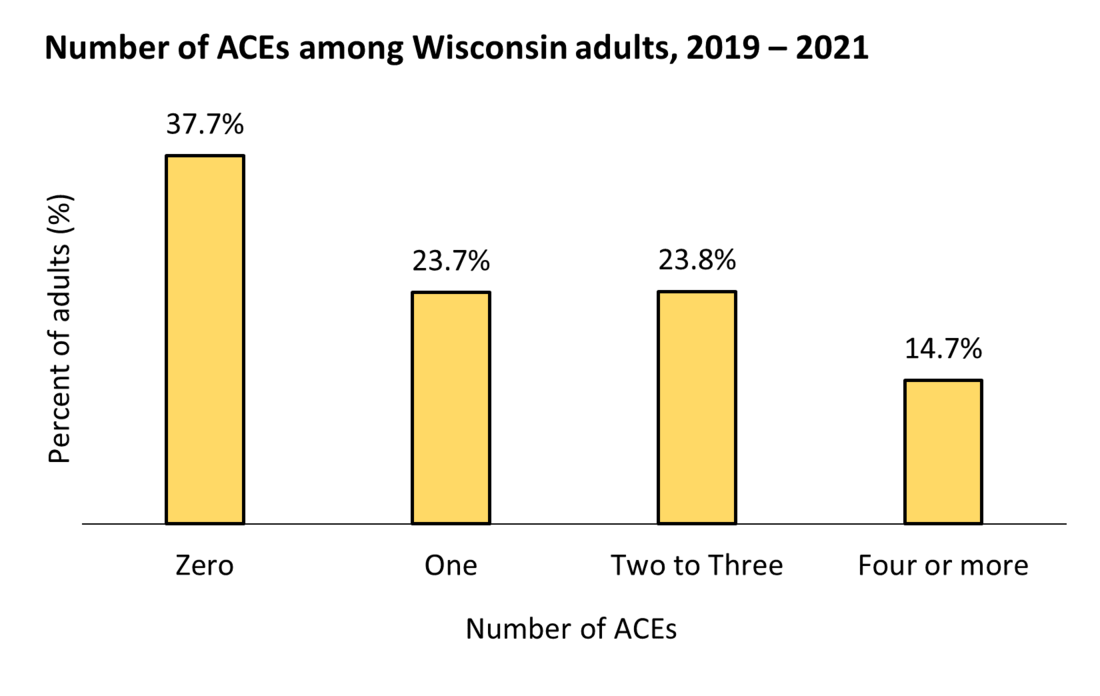Adverse Childhood Experiences in Wisconsin
Adverse childhood experiences (ACEs) are very stressful events or circumstances that happen during childhood. They can have significant effects on physical health, mental health, development, and social functioning. Without support, people can continue to be impacted by ACEs throughout their lives.
The original definition of ACEs includes three broad categories:
- Abuse (physical, sexual, and emotional)
- Neglect (physical and emotional)
- Household challenges (parental death, parental incarceration, living with someone with mental illness or substance use disorder, or experiencing domestic violence)
Additional experiences are now considered ACEs as well, including experiences of discrimination, housing insecurity, and financial insecurity.
How do ACEs affect health?
ACEs make it more likely that someone will experience poor health later in life. They have been connected to many negative health outcomes including:
- Heart disease.
- Cancer.
- Diabetes.
- Stroke.
- Depression.
- Anxiety.
People who have ACEs are also at higher risk of behaviors that can negatively affect health, like smoking. ACEs can be passed from generation to generation, as if they were genetic. Typically, the parents or caregivers of a child who experiences early adversity faced similar abuse or neglect when they were children, too. This effectively creates a cycle that can last for years.
How common are ACEs in Wisconsin?
According to the Wisconsin Behavioral Risk Factor Surveillance System, over 60% of Wisconsin adults have one or more ACEs. The more ACEs someone has, the greater their risk of poor health. Nearly 4 out of every 10 Wisconsin adults have experienced multiple ACEs.
Research shows ACEs impact all populations, regardless of identity. But some people have higher rates of ACEs than others. Why? For one, some demographic groups have more risk factors. Certain groups are more likely to experience collective and historical trauma, like stigma and systematic racism, which affects access to safe housing, educational and financial opportunities, and quality health care. For these reasons, communities of color have higher risk of ACEs. For example, a greater percentage of Black Wisconsin adults (23.3%) have experienced four or more ACEs than white Wisconsin adults (13.9%). People with lower income and education levels experience a higher count of ACEs than those with more economic opportunity.





